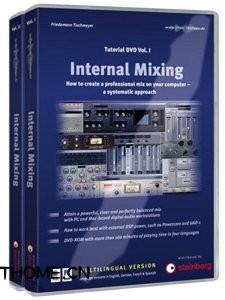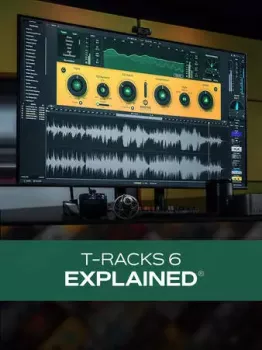2 DVD | ASIN: B0012GYT9E | Date: 2008
英文简介:
Internal Mixing is a platform-independent course that offers a wealth of information, hints and practical examples for mixing multitrack recordings within a computer. The step-by-step approach to mixing guides through a variety of techniques used by professional engineers to achieve the clarity and transparency often heard on CDs and DVDs. Internal Mixing uncovers the concepts behind proper placement of instruments within the mix. A powerful, yet three-dimensional sound is not achieved by usage of tons of expensive plug-ins but by separation of instruments and voices. Internal Mxing also shows that outstanding results can be achieved even without using expensive outboard gear, and just by making good use of the host applicationГ?s internal plug-ins.
Going step by step from understanding some of the concepts that can help form a great mix, Internal Mixing gudes through organizing workflow and the application of basic plug-ins like EQ and Compressors. Internal Mixing also covers the usage of DSP-based plug-ins and offline rendered plug-ins, e.g. for convolution reverb.
Contents Vol. I (running Time 160 mins):
* Defining the objective of the mix.
* The three dimensions.
* Tips for delivering the mix master to the mastering studio.
* More bits sound better!
* The systematic approach в?“ clarity and a good workflow for the mix.
* Working with groups.
* Compressing groups to save CPU and increase sound power.
* EQing groups to save resources and create в??spaceв??.
* Handling groups: What do I control via groups, and what via tracks?
* Workflow overview.
* Summary of panning rules.
* Preventing phase interference.
* Breakdown of the frequency bands and their principle zones.
* Mixing a tight bass range.
* EQ basic rules.
* Common basic parameters of compressors and their use.
Contents Vol. II (running Time 180 mins):
* Exercises with compressors.
* Layering with reverb and delay.
* Native and DSP-aided reverb devices.
* Pre-delay as a design component.
* EQing in reverb return as a design component.
* Layering strategies.
* Pre-fader or post-fader?
* How many reverb devices do you need? Planning depth design.
* Additional aspect: Design and the use of Mute and Special FX.
* Automation.
* Processing single instruments.
* Microphone tracks.
* Refining loops (doubling, gating, compressing, reverbing).
* Exercise in editing loops.
* EQing and compressing vocals.
* Special aspects concerning choruses.
官网: http://www.amazon.com/Internal-Mixing-Tutorial-Vol-1-Bundle/dp/B0012GYT9E







评论0